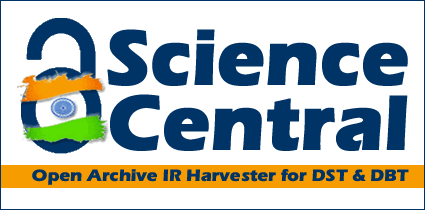Kassab, MA and Mudassir, M and Singh, A and N, M and Bhagat, M and Palanichamy, JK and Ramalingam, P and Chosdol, K and Sinha, S and Chattopadhyay, P (2015) Gene Silencing and Activation of Human Papillomavirus 18 Is Modulated by Sense Promoter Associated RNA in Bidirectionally Transcribed Long Control Region. PLoS One, 10 (6).
|
Text
63_Gene Silencing and Activation of Human Papillomavirus 18 Is Modulated by Sense Promoter Associated RNA in Bidirectionally Transcribed Long Control Region.pdf Restricted to Registered users only Download (2294Kb) |
Abstract
Background Recently various studies have demonstrated the role of promoter associated non-coding RNAs (pRNA) in dsRNA induced transcriptional gene silencing and activation. However the exact mechanistic details of these processes with respect to the orientation of pRNAs are poorly defined. Methodology/Principal Findings We have identified novel sense and antisense long control region (LCR) associated RNAs (pRNAs) in HPV18 positive cervical cancer cell lines HeLa, C-4 I and C-4 II. Using dsRNAs against these pRNAs, we were able to achieve upregulation or downregulation of the sense and antisense pRNAs and the downstream E6 and E7 oncogenes. We present evidence that knockdown of the sense pRNA is associated with reduction in E6 and E7 oncogenes and an upregulation of antisense pRNA. Conversely upregulation of sense pRNA is accompanied by an induction of the oncogenes and a concomitant reduction in antisense pRNA. Moreover, the exact role of sense and antisense pRNAs in dsRNA mediated gene modulation was confirmed by their selective degradation using antisense phosphorothioate oligodeoxynucleotides (ODN). Degradation of sense pRNA with antisense ODN led to loss of dsRNA induced silencing and activation, suggesting that dsRNA mediated gene modulation requires sense pRNA. Both processes were accompanied with congruent changes in the methylation pattern of activating and repressive histones. Conclusion/Significance Thus this data identifies and demonstrates the role of previously unknown important regulatory transcripts in HPV18 gene expression which can prove valuable targets in cervical cancer therapeutics. This mode of gene regulation by bidirectional transcription could be operational in other promoters as well and serve as a mechanism of regulating gene expression.
| Item Type: | Article |
|---|---|
| Subjects: | Neurodegenerative Disorders Neuro-Oncological Disorders Neurocognitive Processes Neuronal Development and Regeneration Informatics and Imaging Genetics and Molecular Biology |
| Depositing User: | Mr D.D. Lal |
| Date Deposited: | 13 Jul 2017 08:40 |
| Last Modified: | 08 Aug 2017 04:45 |
| URI: | http://nbrc.sciencecentral.in/id/eprint/231 |
Actions (login required)
 |
View Item |

